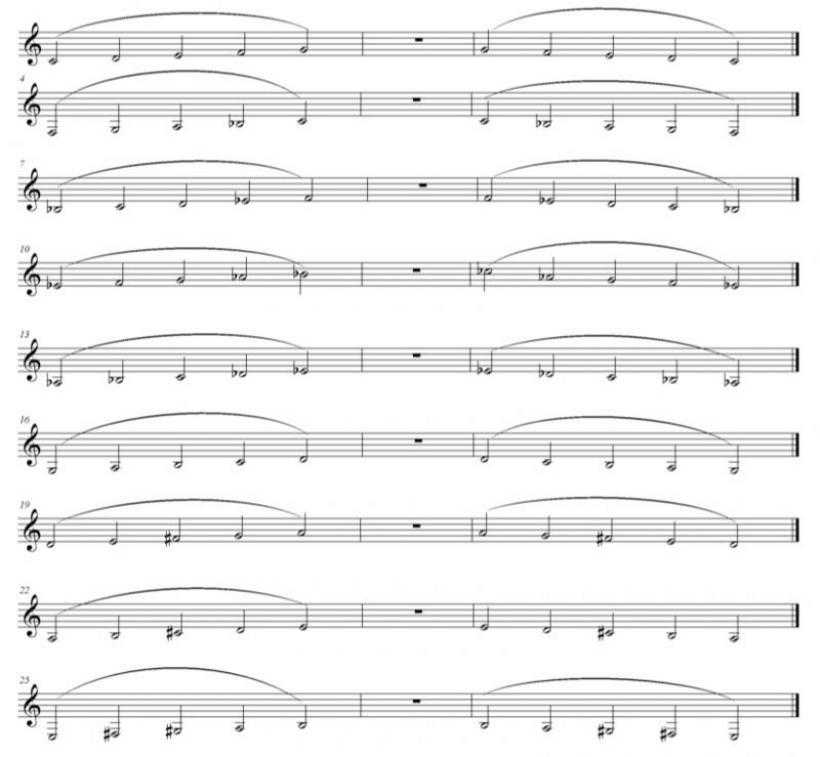In the Beginning there was Air! How to Use Long Tones to Improve Sound in Your Woodwind Section By William T. Robinson
Date Posted: May 27, 2016
After your woodwind students have mastered the basics of beginning band, what do you do next? What can you – the teacher – do to move them along towards a mature tone?
It is always good to review basic fundamentals, such as --
1. How to open the case...define the top and the bottom
2. How to assemble the clarinet
3. How to sit correctly . . . good posture is imperative!
4. Check hand finger positions and shape
5. Check embouchure formation
6. The use of proper air pressure, which leads to . . .
AIR and BREATH SUPPORT!
Reinforce the concept that, above everything else, the clarinet is a wind instrument. You cannot overemphasize the importance of air pressure and its various components of speed, pressure and consistency. The clarinet’s bore is like a wind tunnel that should be completely filled with moving air all the time. The air is the sound, and like the gas in your car...it will not run without gas!
To achieve proper air pressure, encourage your students to practice long tones everyday. Long tone exercises are fundamental to a good sound. Every practice period should begin with long tones. If your students buy into this concept, everyone wins. On the next page are some suggestions for long tone exercises.
Basic Long Tone Exercises
Play each phrase below as slowly as possible. Work for a clear, steady tone. Check pitch and embouchure. Remember to push up with the right hand thumb. Try to make it to the end of each phrase in one breath.


Long Tones with Dynamic Variation
For this exercise choose any note to practice the dynamics shown below. Gradually lengthen each long tone as you are able. The tone should be steady and clear, and without wavering. Use a tuner to correct any variations in pitch.
Next try crescendos. Pick a note and gradually increase the volume:
- First long tone: 1221
- Second long tone: 123321
- Third long tone: 12344321
- Gradually expand the level higher to Forte and above.
Now try the reverse: decrescendos. Pick a note and gradually decrease the volume:
- First long tone: 4334
- Second long tone: 432234
- Third long tone: 43211234
Summary
Long tone exercises should be played at a slow tempo, never fast (54-60 mm). Good tone is the goal, not finger technique. Strive for a steady, full, and vibrant, tone throughout all dynamics and registers.
REMEMBER:
- Keep embouchure firm throughout
- Keep air pressure steady throughout
- Teacher should check:
- Posture
- Hand position
- Pitch with tuner
- Embouchure formation
- Characteristic tone quality, clear and focused tone centers
Long tone exercises should make it easier to identify and diagnose tone problems that may be plaguing students in ensemble rehearsals. Long tone exercises are the building blocks for proper tone production and technical facility. Every professional wind player begins their day with long tone exercises – shouldn’t your students be doing the same?
William T. Robinson maintains an extensive private studio (oboe and clarinet) in Huntsville, Alabama. He is a veteran music educator having completed 40 years in secondary schools.
He has presented clinics all over the US including for the Midwest Band and Orchestra Clinic. His book, The Embryonic Oboist, is a must-have for all band directors who start oboe students. He is also the author of “Fun with the Oboe” published by Mel Bay.
You can reach William directly at witajo@knology.net.